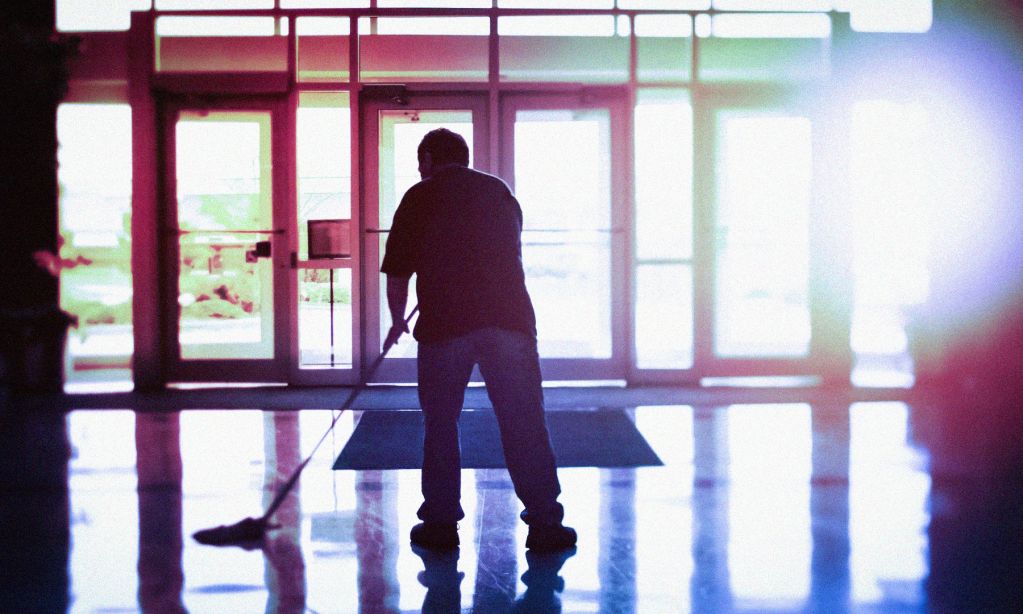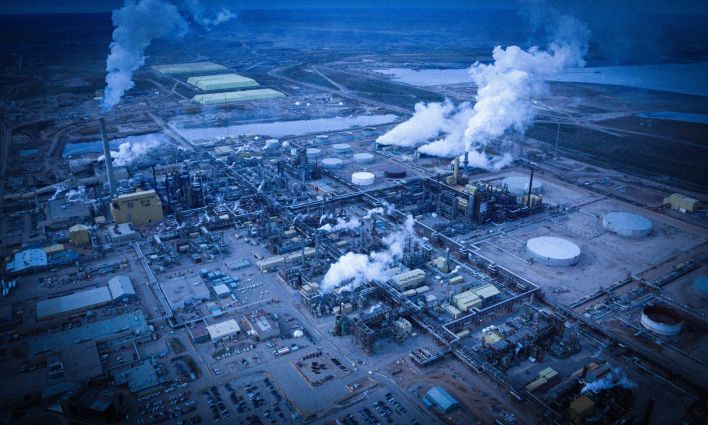There is a memorable scene in Ken Loach’s film Bread and Roses, set in the epic Justice for Janitors struggle in Los Angeles in the late 1990s.
Two immigrant janitors are cleaning the floor in front of a bank of elevators as a group of high-priced lawyers bustle past, nearly stepping over the cleaners in their rush to get to their destination.
After they have left, one of the pair says to his newly hired helper: “You see these uniforms we wear. They make you invisible.”
When most of us think of transforming the economy into true sustainability, the images that come to mind are of solar panels being installed or electric vehicles replacing diesel and gasoline.
Perhaps we have read about low-carbon building design.
But few of us know about the vital role that is played by the people who run these buildings. We take for granted that this “just happens.”
Whether they work as apartment superintendents, school custodians, or building operators—this is still a largely invisible workforce.
Initiatives to reduce our carbon footprint look at greenhouse gas emissions from transportation, buildings, energy production and waste. In major cities, the largest portion of CO2 comes from the heating, cooling and operation of buildings—it gets higher depending on the source of electricity. So reducing building energy use is a key factor in the efforts of cities across the world.
One of the three top-level recommendations in the Toronto TransformTO program’s first report in 2017 was to develop the workforce for high-performance buildings.
That includes skilled trades, such as electricians and HVAC mechanics, as well as those designing green buildings or energy retrofits. Toronto was a global leader in retrofitting through the Better Buildings Partnership, launched in the mid-1990s.
But the thing about a retrofit is that once it’s complete, everything relies on the skills of the people running the building and its systems. If they are not properly trained, you quickly lose the efficiencies that were in the original design. Because big buildings are actually pretty complex systems.
The largest concentration of high-rise buildings in this continent sits in New York City. It’s also a place with a remarkable level of unionization of building custodians and operators.
Their union, SEIU 32BJ, has been a political powerhouse for decades, combining a culture of relentless organizing with political mobilization. City regulations help anchor the standards for building operators and a joint labour-management training fund is supported by a wide range of property owners.
Starting in 2005, that training fund set out to incorporate new skills for greening New York City’s massive building stock. In 2010, with federal funding under the American Recovery Act, it launched an ambitious goal of training over a thousand building operators—called the Green Supers Program—to achieve a comprehensive approach to sustainable and energy efficient building operation.
Participants in the program combine classroom sessions with hands-on field exercises that cover building science and envelope, lighting, heating, ventilation and air conditioning, indoor environmental quality, water conservation and energy benchmarking.
It didn’t take long for the program to prove a success—some 1,600 SEIU members graduated in the first two years.
In a review by environmental consultants Steven Winter Associates, program graduates stated that they benefited not only from an expanded skill set, but also from an increased capacity to communicate energy efficiency issues to building decision-makers, leading to the successful implementation of a range of efficiency measures.
The review noted the potential to scale up this program and share it across other jurisdictions. Since then, it has been replicated in a number of U.S. cities where SEIU has strong industrial relations with property owners, often in partnership with the U.S. Green Building Council.
In New York, the impact of Hurricane Sandy—where hundreds of buildings were flooded in 2012—further reinforced the union’s commitment to climate action.
Are there lessons for Canada from this example? Absolutely.
The new federal Sustainable Jobs Act outlines a number of measures, including workforce training. That could reach farther than construction and industrial trades and be much more comprehensive.
While there may not be the kind of extensive bargaining relationships in commercial or multi-residential sectors that exists in New York or Los Angeles, there are tens of thousands of buildings in the public sector and broader public sector that could make a difference.
It doesn’t matter if it’s a hospital, school, library or transit garage—a serious commitment to empowering workers who run our buildings would help achieve the net-zero goals we all believe in.







